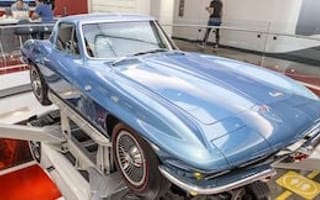
Founded the year before the Summer of Love, in the midst of Vietnam and right before President Lyndon B. Johnson decided the job wasn’t for him, Edmunds is far from your average tech startup.
Today, the company’s consumer review website for the automotive industry might not look anything like the books it started printing in 1966. But the intent to help consumers make a gigantic purchasing decision is still at the forefront of what it does.
Paddy Hannon joined Edmunds as executive director of software architecture 10 years after the company made the leap and posted its new car pricing data through a gopher site.
In the 13 years since he joined the company, Hannon has risen through the ranks to become the CTO. Built In LA spoke with Hannon to discuss the challenges his team faces as they plan to introduce a brand new tech stack, what the stack will allow the company to do and the reason so many Edmunds employees stick with the company for more than a decade.

You have been at Edmunds since 2004. How is the company able to retain its talent so effectively?
It's a really easy place to work. Our CEO is relentless about focusing on the employees and the culture of the company. We have a thing called "Thinking Thursday," where we aren't supposed to have meetings. He really wanted to make sure that the employees had a day to really just focus. So often, in companies, people just get whipped around from meeting to meeting. He recognized that we're creative, and we're here to write software and design products, and we need uninterrupted time to do that. He really focuses on catering to the employees to make sure they can thrive.
Can you explain Edmunds’ “results-only work environment?”
If you need to take your kid to the doctor or you have to get your driver's license renewed, you shouldn’t have to take a vacation day. Just go do it. We trust you, you're an adult and we know you're going to get the work done. We provide a lot of flexibility for how you want to work so that you can balance your life. That's a big part of why people stick around.
We're pushing the boundaries of technology and creating great products that meet the consumers' needs, but we do it in a company culture that's very unique.

You mentioned that you’re in the process of transitioning to a new tech stack. What is it based on?
We're in the process of moving from a stack we built in-house about eight years ago to Node JS and React, which is a Javascript framework that came out of Facebook.
Our new system, which we're calling Venom, is going to kill the CMS. Right now, the issue with the CMS is that, if you want a rich user experience, you may have to write business logic within the CMS and duplicate that business logic in Javascript to execute in the web page.
With React, everything is in Javascript, so that's a big transformation for us, going from Java to Javascript as our primary language for building the website. What it does is allow you to write the business logic once and it doesn't care where it's being executed. It allows you to seen on these single page applications where it feels like everything is always there, and the benefit for the developers is they don't have to switch between programming languages to make a single page work. They can code everything in React.
What sort of advantages does this give Edmunds?
With the same sort of programming paradigm, you can generate virtual reality applications and native iOS and Android applications. Over the next 18 months, I see us moving more heavily into that space, and we're going to be able to start integrating some basic VR functionality with our core website. I'm hoping that allows our developers to have a lot more flexibility to tackle more problems. So no longer will you have to be an Android or iOS specialist, you can actually be a React specialist. You can branch off and start working in areas you might not normally work in.
What sort of VR projects are you working on?
Right now, I have a demo on my phone that shows the interior 360 of a car, and as you move your phone around, it's like you're moving through a window into a car. It's written using the exact same programming model that we're building our web pages from.
Photos courtesy of Kurt Niebuhr
Have a tip? Let us know or follow us on Twitter and LinkedIn.



